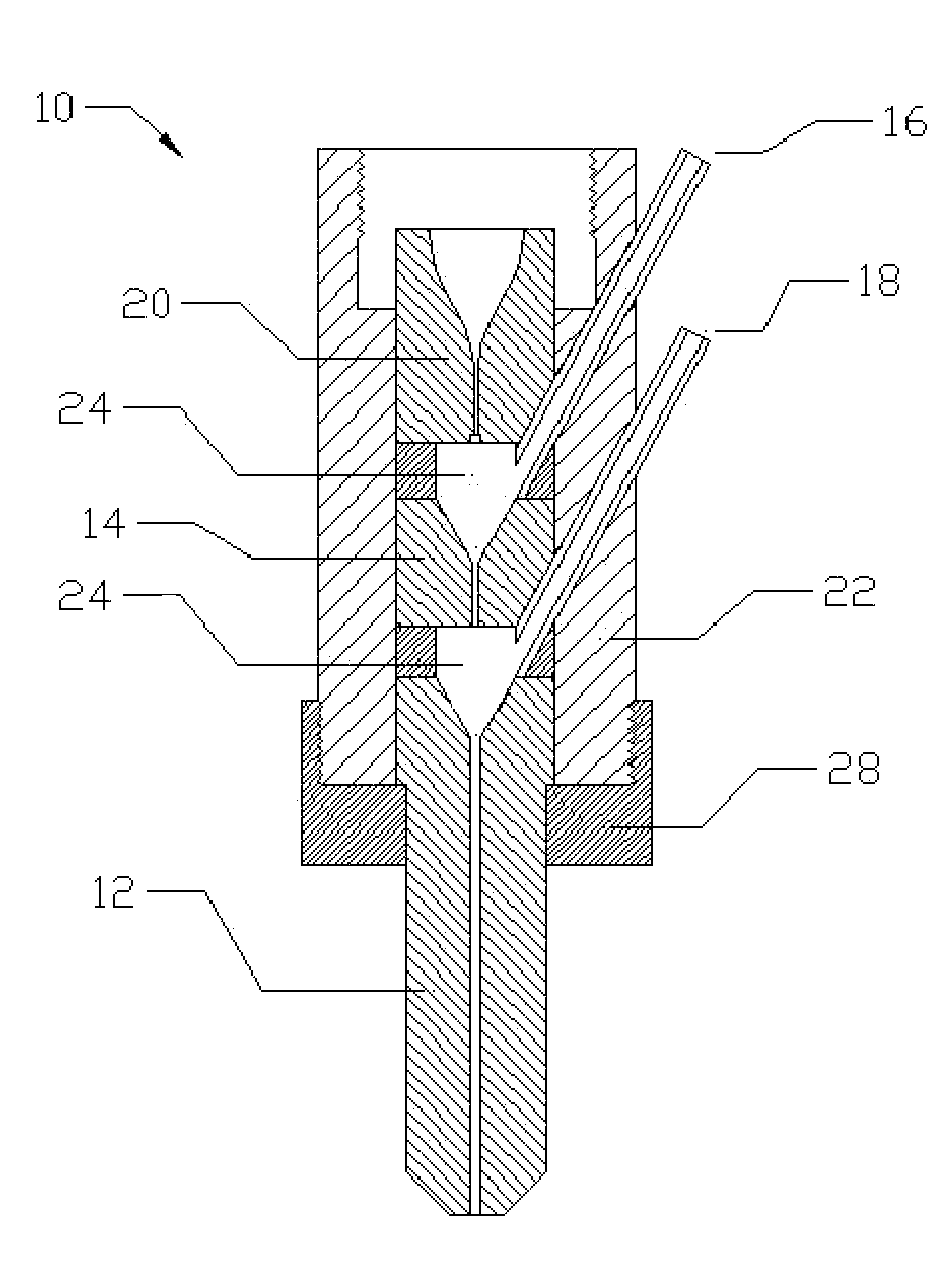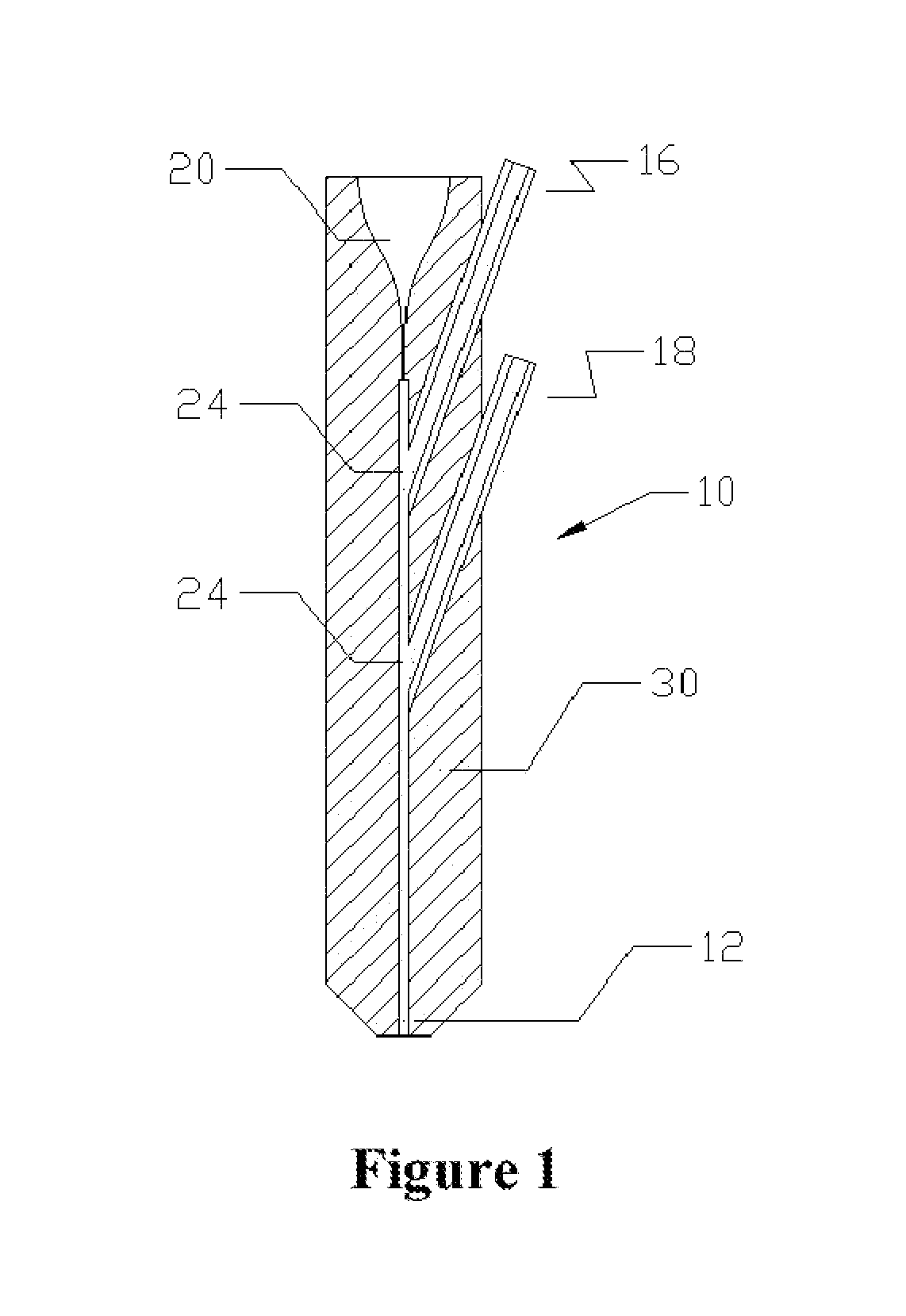Conventional abrasivejet technology is used to
cut a variety of materials but is found to be highly inefficient in the use of energy and resources mainly due to equipment design limitations that incorporate use of garnet as the abrasive.
Conventional abrasivejet is also currently limited to perform one purpose at a time such as thru
cutting of material or surface removal of material as there are not any abrasivejet systems currently producing useful byproducts simultaneously with the initial purpose of
material removal.
A more important similarity, as well as deficiency, of conventional abrasivejet technology is the widespread use of garnet abrasives over all other abrasives.
Conventional abrasivejet technology does not effectively use abrasives other than garnet due to numerous factors such as higher initial costs of most other hard abrasives compared to garnet and the inability of other hard abrasives to
cut significantly faster than garnet.
These factors generally result in higher overall costs of abrasive consumption after considering the final amount of material cut.
There is also the limitation of conventional abrasivejet cutting head technology preventing use of harder abrasives than garnet because of the increased costs of accelerated
nozzle wear created by these harder abrasives.
The similarities of conventional cutting head designs' primary use of only one type of
nozzle material, use of only one abrasive medium, and use of only two types of orifice materials, mainly produce a common limitation of an approximate 3:1 nozzle to orifice ratio.
Therefore, a relatively larger volume of area of area in the nozzle bore compared to the smaller area of volume of the liquid energy creates inefficiencies.
A solution to create a more efficient use of energy would incorporate a smaller nozzle to orifice ratio such as 2:1 but this solution is not currently viable with use of conventional cutting heads and garnet abrasives.
The best solution for conventional technology has been use of relatively small volumes of high-pressure liquid in the abrasivejet mixture allowing for variable cutting, but this also reduces the effective cutting energy by being dispersed over a greater area, hence, the
effective energy is not optimally focused.
A ring
orifice plate or disk such as employed in the U.S. Pat. Nos. 3,424,386, 4,080,762 and 4,125,969 to provide the fluid jets around the sand
stream has many disadvantages including: the introduction of pressurized fluid tangentially into a nozzle a
short distance above the orifice disk is not conducive to the generator of a coherent fluid jet due to flow disturbances upstream of the orifices; sand in the central portion of a nozzle creates an abrasive environment that can weaken the interior wall of the annular fluid chamber without being detected; pressurized fluid in the outer annular space results in a nozzle that is very large in dimensions as both interior and exterior walls must be sized to accommodate the
fluid pressure; and sealing the annular orifice disk can be very troublesome.
These problems would be intensified at higher pressures.
The problem areas with the prior art cutting head shown in this patent are the orifice, the mixing chamber and the liquid jet.
A problem with this design is the separation effect of the jet as it starts to break up.
This methods adds abrasive to the
stream before entering the orifice.
The
advantage of this method is that it produces a coherent jet, but the
disadvantage is that components such as tubing, valves and orifices
wear out quickly due to the abrasive suspension inside the
system severely eroding everything it contacts.
Another
disadvantage of the orifice designs in conventional abrasivejet is the sharp transition from the pump tubing to the relatively small orifice.
This sharp transition creates a
high resistance of the pressure flow and does not allow for property formed liquid optimization, resulting with jet
distortion, and decrease in overall energy efficiency of the
system.
However, there are many reasons why garnet is not the optimum abrasive available when considering the complete abrasivejet
system, recycling and the ability to perform two or more processes in one operation.
One reason is that garnet is not the optimum abrasive is because it is not recyclable effectively.
Another
disadvantage is that very hard subject materials such as carbides and hard ceramics are generally not cut with abrasivejet technology because of the very low cutting speed ability of garnet to cut these materials.
 Login to View More
Login to View More 


